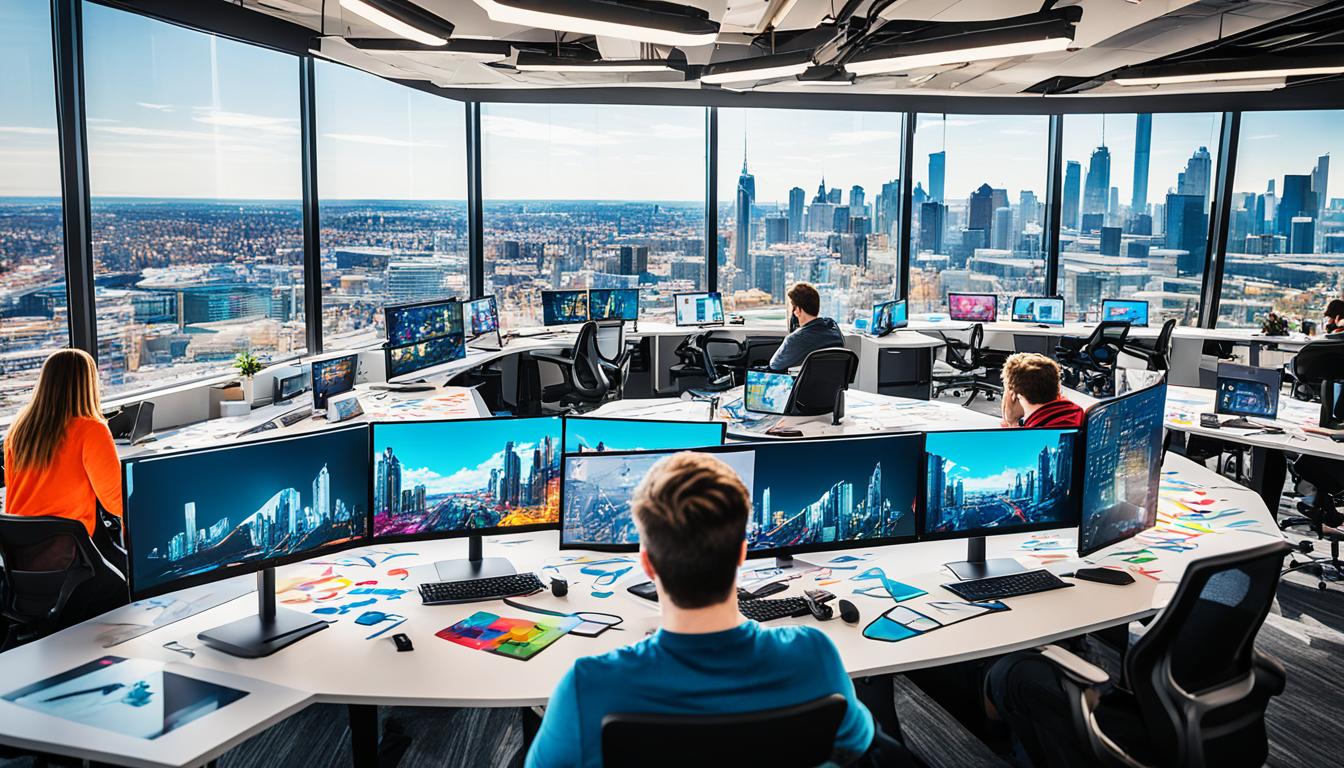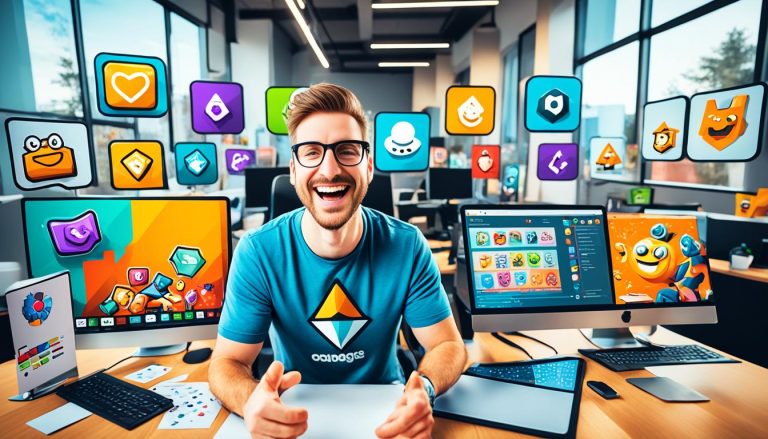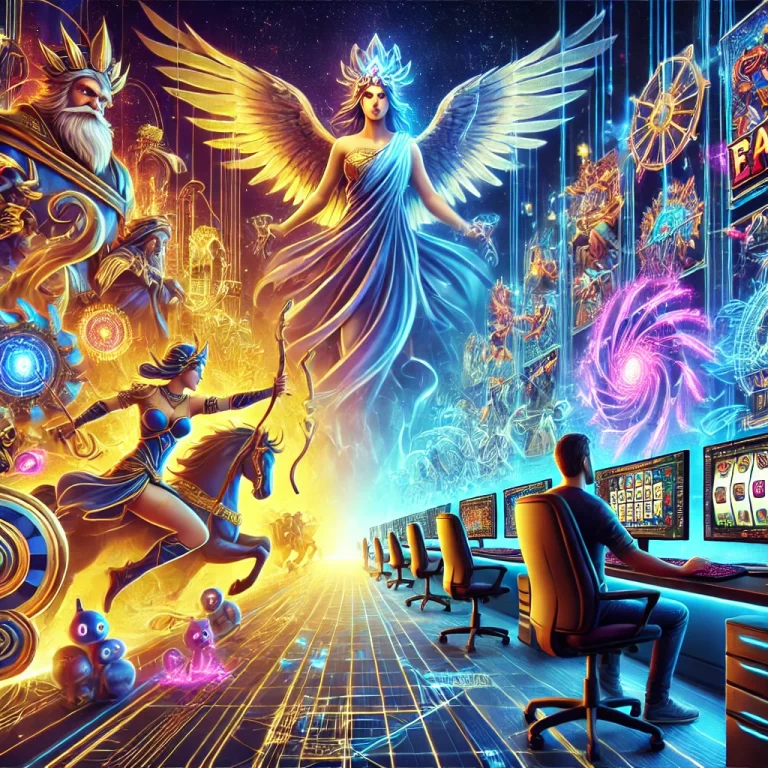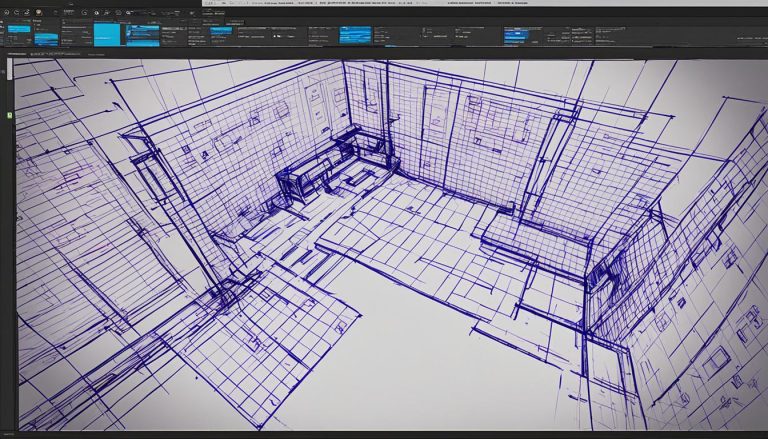What Does A Video Game Design Studio Do
A video game design studio is a creative powerhouse in the gaming industry. These studios are responsible for bringing captivating and immersive gaming experiences to life. From concept to completion, video game design studios blend artistic vision, technical expertise, and collaboration to create the games we love to play.
But what exactly does a video game design studio do? In this article, we will explore the fascinating world of video game design studios, uncovering the creative process, the importance of collaboration, and the impact of technology on the industry.
The Creative Process of a Video Game Design Studio
A video game design studio is where the magic happens. It’s where innovative ideas come to life, captivating storylines are crafted, and immersive gameplay experiences are built. The creative process within a video game design studio is a fascinating journey that involves collaboration, imagination, and meticulous attention to detail.
At the heart of the creative process is brainstorming and concept development. Designers gather together to generate ideas, drawing inspiration from various sources including popular culture, historical events, and personal experiences. These initial brainstorms lay the foundation for the game’s core concept.
Once the concept is established, the designers embark on crafting the game’s storyline. A compelling narrative is vital to engage players and keep them immersed in the game world. Storytelling techniques are employed to create memorable characters, intricate plotlines, and unexpected twists that captivate players from start to finish.
Characters are crucial elements in video games, and the design studio invests significant effort into their development. Each character has a unique personality, appearance, and backstory that players can connect with and relate to. Designers carefully consider every aspect, from their visual design to their abilities and motivations, ensuring that they resonate with the players and contribute to the overall gaming experience.
The design studio also focuses on designing the gameplay itself. This involves defining the mechanics, controls, and overall structure of the game. The creative team works closely with programmers, artists, and sound designers to create an immersive and interactive experience that engages players on multiple levels.
Design Document
To streamline the creative process and ensure everyone is on the same page, video game design studios often create a design document. This document serves as a comprehensive guide that outlines the game’s concept, story, characters, gameplay mechanics, and visual and audio elements. It acts as a blueprint for the development process, providing a clear direction for the team and guiding their efforts.
The design document also helps facilitate communication and collaboration among team members. It serves as a reference point, allowing designers, programmers, artists, and sound designers to work together seamlessly. By referring to the design document, the team can ensure that their individual contributions align with the overall vision of the game.
A video game design studio is a hub of creativity. It’s where ideas are transformed into living, breathing worlds that players can explore and enjoy. The creative process within a video game design studio is a collaborative and iterative journey that requires a delicate balance of imagination, technical expertise, and attention to detail.

Collaboration within a Video Game Design Studio
In the dynamic world of video game development, collaboration is the lifeblood that fuels innovation and brings creative visions to life. In a video game design studio, numerous teams and professionals with diverse skill sets come together to create captivating gaming experiences. From concept artists and programmers to sound designers and level designers, collaboration is the key to success.
When designing a video game, collaboration starts at the very beginning, during the brainstorming and concept development phase. Artists collaborate with game designers to visualize the game’s aesthetic, characters, and environments. Programmers collaborate with designers to ensure that the gameplay mechanics are implemented seamlessly into the game’s code. Sound designers collaborate with the entire team to create immersive soundscapes that enhance the player’s experience.
“Collaboration allows us to tap into the collective creativity and expertise of our team members. By working together, we can push the boundaries of what’s possible in video game design and deliver unforgettable experiences to players around the world.”
– Mark Johnson, Lead Game Designer
Effective communication and teamwork are crucial in a video game design studio. Regular meetings and clear channels of communication ensure that everyone is on the same page and working towards the same goals. Collaboration platforms and project management tools help streamline the process, allowing team members to share updates, feedback, and assets seamlessly.
The Benefits of Collaboration in Video Game Design
Collaboration within a video game design studio brings numerous benefits to the table. Here are a few key advantages:
- Enhanced creativity: Collaboration allows team members to bounce ideas off each other, sparking new and innovative concepts that may not have been possible in isolation.
- Efficient problem-solving: When faced with challenging design problems, collaborative teams can pool their knowledge and expertise to find creative solutions.
- Improved quality: The collective efforts of a collaborative team result in higher-quality games that meet and exceed player expectations.
- Reduced risks: Collaboration helps identify and address potential issues early on, reducing the risk of costly mistakes and delays.

The Impact of Technology on Video Game Design Studios
Technology has played a crucial role in transforming the landscape of video game design studios. With each passing year, advancements in technology have revolutionized the industry, pushing the boundaries of what is possible in terms of graphics, gameplay mechanics, and storytelling.
One significant impact of technology on video game design studios is the ability to create more realistic and visually stunning graphics. The evolution of powerful hardware and graphics processing units has allowed designers to bring their imaginative worlds to life with unprecedented detail and fidelity. From lifelike character models to breathtaking landscapes, technology has enabled game developers to immerse players in visually captivating experiences.
Moreover, technology has also paved the way for innovative gameplay mechanics that enhance player engagement. Virtual reality (VR) and augmented reality (AR) technologies have opened up new possibilities for interactive gameplay and player immersion. These technologies allow players to step into the game world, interact with objects, and experience gameplay in unprecedented ways, creating a more immersive and captivating experience.
Furthermore, advancements in technology have also impacted the storytelling aspect of video games. With the introduction of more powerful hardware, developers can now deliver compelling narratives through cinematic cutscenes, realistic facial animations, and dynamic storytelling techniques. Technology has enabled video game designers to create rich and immersive worlds that captivate players and deliver unforgettable storytelling experiences.







